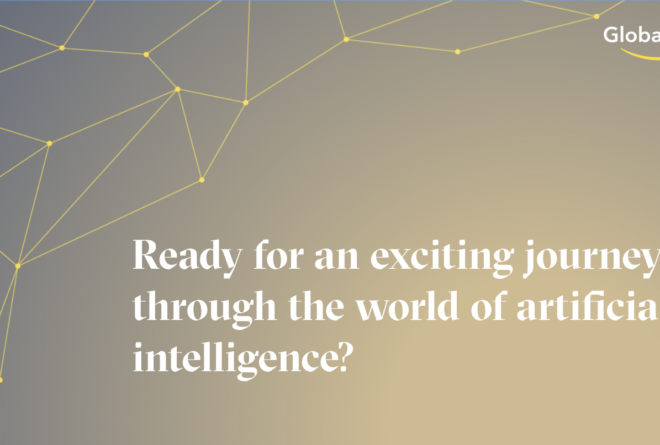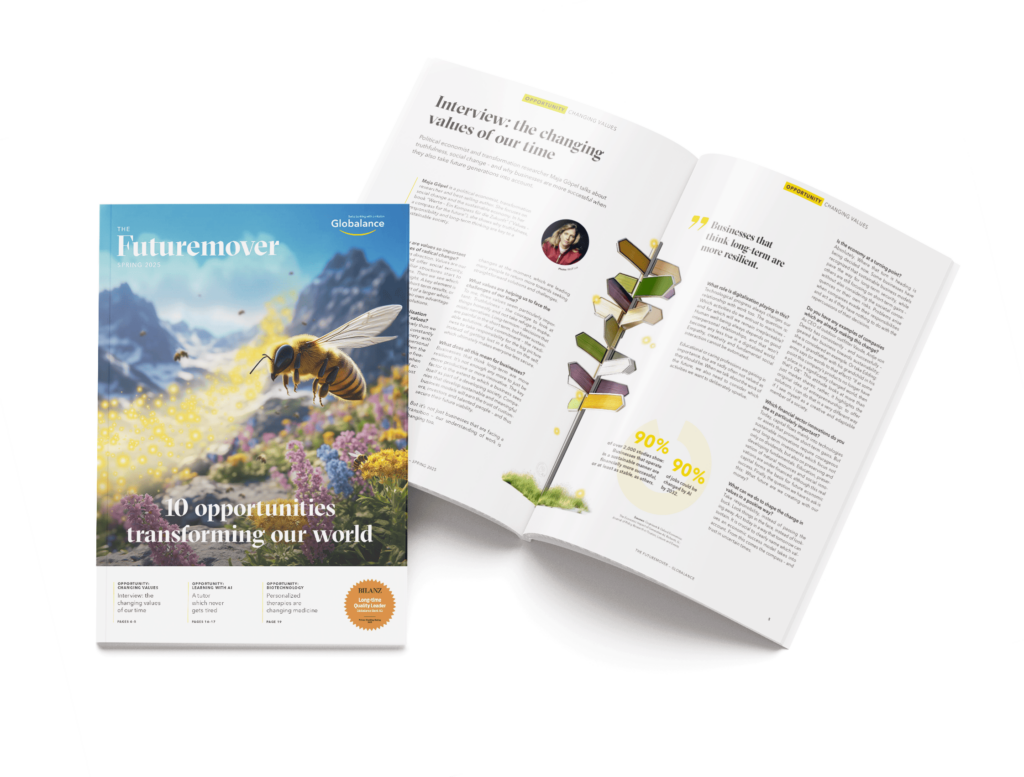News & Trends
Economic Pointers

Dr Marcel V. Lähn, CIO of FERI AG, in interview with Globalance on stagflation, artificial intelligence and Germany’s dwindling competitiveness.

Dr Marcel V. Lähn
Dr Marcel V. Lähn is a member of the Management Board and Chief Investment Officer (CIO) at FERI AG in Bad Homburg and is responsible for the FERI Group’s investment strategy and investment activities. Before joining FERI, he worked for the US Merchant Bank BDT & Company as Managing Director and Chief Operating Officer (COO) in Frankfurt am Main. Prior to that, Dr Lähn was responsible for the investment strategy of BHF-BANK AG in Frankfurt am Main as Chief Investment Officer (CIO) and managed the bank’s private banking business as a fully authorised representative.
Interview
Inflation is falling, the economy has been resilient so far – which economic scenario do you see coming our way in the second half of 2023?
The global stagflation scenario that has been with us since last year is well advanced, but still intact. We are therefore in a situation of weak economic growth worldwide, coupled with persistent, albeit easing, inflation. The responsible central banks are responding by continuing to tighten monetary policy, in some cases for longer than the markets anticipated. The result is a still positive, but flattening trend in interest rate increases.
At regional level, this means the expectation of an ongoing cycle of interest rate hikes by the Fed in the US, which increases the risks of failing to achieve a soft landing given the already prolonged inverse yield curve and looming corporate earnings revisions.
In Europe, the ECB is also expected to continue its cycle of interest rate hikes despite the threat of recession. China is largely failing as a driver of global economic growth due to disappointing growth figures after reopening its economy in the wake of the end of the COVID-19 pandemic.
The result is an overall flattening of global economic growth with partly negative development in individual regions and an increasing slowdown in growth. At the same time, the continuation of geopolitical risks can be observed, as well as progressive deglobalisation. This can be exemplified by the increasing mutual import and export restrictions on strategically relevant core elements for future technologies by the opposing superpowers China and the US. The interaction of these factors leaves us with a system of persistent but falling inflation and ever-present recession risks also for the second half of 2023. If the soft landing does not succeed in the US, possible spillover effects of slower or negative growth could make the global economic outlook even more cloudy.
With that in mind, where do you see the greatest risks and the greatest opportunities for investors? How should investors position themselves?
In the scenario just described, the greatest risk for investors in the short term is in equity investments. At the same time, equities remain very promising in the longer term. If a soft landing does succeed in the US and the further escalation of geopolitical conflicts should fail to materialise, the stock markets’ higher valuations in the first half of 2023 may also be justified. In light of the current risks though, defensive positioning seems advisable for equity investments.
Bond investments have become more attractive due to the rise in interest rates. However, it should be noted that despite increased nominal interest rates, many bond investments still do not have positive real interest rates. The focus in the bond segment should therefore be on companies with first-class credit ratings in addition to government bonds.
All in all, it can be said that in a scenario characterised by significant uncertainty, like the current market environment, an investor with a broadly diversified portfolio and active risk management is well positioned for success. In addition to the traditional investments of money, bonds and equities, alternative investments such as commodities and precious metals, hedge funds and private markets as well as investments in the volatility asset class should also be included in the portfolio.
Let’s talk about the topic of KI which is currently fuelling investor fantasies – how do you assess this from a macro perspective? Which regions, which sectors are leading the way? Who are the losers?
The topic of artificial intelligence is complex and exciting – and has the potential to not only change the corporate world, but also private life in general and thus society as a whole in the long term.
The core competence for this new technology already lies in the US and China, and both regions – accompanied by a few regional exceptions including Great Britain, Canada and Israel – will continue to be the centre of further development in future. In this regard, it is important to distinguish between AI in the context of private companies and state institutions. While the Western world judges AI in particular by the valuation of privately funded start-ups or companies traded on the stock exchange, in China the state is an important driver of the technology’s further development.
In the western hemisphere, Silicon Valley and its start-up OpenAI (ChatGPT) are currently the epicentre of AI technology. In many cases, AI systems are powered by high-performance computer chips, for example those from NVIDIA, another California-based manufacturer. Companies that either directly develop AI systems or, as in the example of NVIDIA, provide the necessary infrastructure for them were the big winners this year. They played a significant role in the strong market performance in the technology sector during the first half of the year, which the Nasdaq ended with a record increase of over 30 %.
For investors, this raises the question of what is the best way to benefit from the artificial intelligence megatrend and whether, given the already increased valuations of the relevant companies and the obvious hype surrounding the topic, this is currently the right time to invest or whether it does in fact seem sensible to wait for things to calm down.
In general, it is important to distinguish between two types of companies: those that are either directly linked to the development of artificial intelligence or whose business model is geared towards profiting from this development and others whose existence is threatened by the use of artificial intelligence.
You can read everywhere about massive efficiency gains thanks to this new technology. Paid services can now also be obtained for free – are we facing a deflationary shock and job cuts across the board? What are the implications?
The efficiency gains through this new technology are indisputable. The extent to which a deflationary shock with job cuts is imminent and when this will occur is difficult to predict. Entirely in line with Schumpeter’s theory of creative destruction, as an innovation artificial intelligence will lead to sustainable change in previous business models, processes and behavioural patterns. As part of this transformation process, new business models and therefore also jobs will be created and previous ones will no longer exist. The time frame and final implications cannot be predicted exactly. The importance given to ethics will also be a decisive factor here.
The comparison to autonomous driving can be taken here to illustrate this issue more clearly. Proclaimed many years ago as a megatrend with negative implications for truck drivers and car manufacturers, for example, many technology companies have recently scaled back their ambitions due to the complexity of implementing this topic, with the consequence that the then predicted increase in unemployment at a global level has largely failed to materialise so far, despite the undisputed progress made to date in this segment, particularly in the US and China.
Artificial intelligence will significantly change our professional and private everyday life in the coming years and will continue to develop at an increasing speed. It is not easy to predict whether and, above all, when this will materialise into a deflationary shock with job cuts. However, there is a progressive process of change that will accelerate in the future, i.e. an exponential growth in the spread of technology with the resulting consequences.
On the corporate world, every responsible person must therefore deal with the question of what this change means for their own business model and their own future viability and how they can successfully adapt to the rapidly changing framework conditions. For investors, the question remains of selecting the right companies that are the drivers of this development and therefore benefit from artificial intelligence – and how to invest in these business models while taking valuation ratios into account.
Germany is currently seriously losing its competitive edge according to international analyses such as the IMD ranking. How do you assess the situation: Can Germany maintain its position as a leading industrial nation or is its international relegation unstoppable when compared to China and other industrial nations?
I don’t like thinking in absolute terms like “unstoppable”. It undoubtedly is very difficult for Germany to maintain its global position as a leading industrial nation. And it is indisputable that we do not have global leaders in many of the future key industries. Having said this, we have already fallen behind the US and also China in many areas. In general though, the question must be answered as to why this is the case and whether the regulatory framework for promoting technology and innovation in Germany has been set correctly. Let’s take, for example, young companies like BioNTech in the wake of the COVID-19 crisis or, more recently, DeepL or Alep Alpha in the context of artificial intelligence. All of them have incredible innovation potential and thus illustrate that Germany is also capable of producing market-leading innovation on future markets with global reach. In this case, we have to look at how we can, on the one hand, enable these companies and their founders to have long-term growth prospects in Germany. And on the other hand, we should also systematise the success factors of these companies for future founders and further encourage the provision of venture capital across the board.
The area of digital assets, and in particular cryptocurrencies, is also strategically relevant. In addition to the fact that Germany has already been able to achieve a certain degree of importance with Ethereum by international comparison, the regulatory framework design can also be a decisive competitive advantage here – both in the context of the taxation of blockchain-based investments and in terms of security for the investor in the management and safekeeping of their assets. The latter just became apparent to investors in the case of crypto banks in the US in March this year. However, a regulatory framework does not mean over-regulation, but the provision of clear rules and boundaries for conducting business activities. And in addition to the political framework conditions, education and innovation, especially in the context of artificial intelligence discussed above, will be the factors that can create and sustain long-term growth in an economy – with a clear focus on the younger generation, which drives this innovation.



